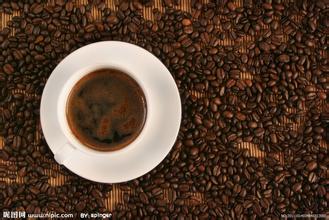Description of taste and flavor of honey-treated coffee beans by sun washing
Description of taste and flavor of honey-treated coffee beans by sun washing
After washing, at this time, the coffee beans are still wrapped in the pericarp with a moisture content of 50%. They must be dried to reduce the moisture content to 12%, otherwise they will continue to be mellow, moldy and rotten. The better treatment is to use sunlight to dry, although it will take 1-3 weeks, but the flavor is very good and very popular. In addition, machine drying is used in some places, which greatly shortens the processing time, so that farms with less flavor than sun-dried coffee must build washing ponds and be able to introduce an endless supply of running water. During the treatment, the beans that are mellow are put into the pool, and the coffee beans are washed to the smooth and clean mucous membrane by the friction of the beans and the power of running water. The adhesion is very strong, and it is not easy to remove. It must be placed in the tank for about 18-36 hours to make it mellow and decompose the mucous membrane. There are two methods of fermentation, namely wet hair alcohol and dry hair alcohol, as the name implies, the former adds water, the latter does not add water. In the process of getting mellow, there are special changes in the seeds and internal pulp, which is one of the steps that most affect the flavor of coffee. Use the machine to remove the peel and pulp, leaving only the coffee beans wrapped in endocarp. At this time, there is a layer of mucous membrane on the outside of the beans. The process of washing is to wash the mucous membrane and put the harvested fruit in a water tank and soak for about 24 hours. At this time, the ripe fruit will sink, while the immature and overripe fruit will float up, and the Brazilian coffee fields can be removed. Most of them will be harvested mechanically to meet the economic benefits. When 75% of the coffee fruit in the coffee garden turns red, mechanical harvesting is started, followed by the same pre-washing operation, which is moved into the sink to remove floating beans, sift out the sunken beans, and then use a large pulp screening machine to dig out the pulp and remove the pods covered with pectin. The next stage is separate from the washing method: the sticky pods do not need to be moved into the tank to ferment, but to the outdoor bean drying farm. Because of the dry climate in Brazil, the sticky pectin on the pods will harden in about a day or so. Then use a large number of manpower to turn up and down, so that the pods dry evenly inside and outside, so as not to return to moisture and stink. For about two to three days, with the help of the natural forces of sunlight and dry climate, the pods can achieve a certain degree of dehydration. Then further dry with a dryer, the water content is reduced to 10.5%, and the pods are stored in a special container for about 10 days to further mature, in order to stabilize the quality, remove sheep skins (pods) before export, remove coffee beans, and pack them in stages.

Important Notice :
前街咖啡 FrontStreet Coffee has moved to new addredd:
FrontStreet Coffee Address: 315,Donghua East Road,GuangZhou
Tel:020 38364473
- Prev

Operation step of manual bean grinder: which brand is better for manual bean grinder
Manual bean grinder which brand is good 1.1 it is recommended to use manual bean grinder at home using hand flushing, siphon kettle, pressure pot and similar cooking methods. It is not recommended to use espresso if it is made. 1.2 the choice of grinding core the movement of hand bean grinder is divided into metal and ceramic. The metal ones get hot when they are ground, which makes the coffee
- Next

Introduction to the use of coffee press, preservation and brewing skills
Introduction to single or two heating systems br automatic coffee machine usually takes 43 seconds to heat from the brewing temperature to the steam temperature, while two heating systems can actually eliminate the waiting time. Full-automatic general use of thermal resistance plate heating unit. When heated from the punching temperature to the steam temperature, a small amount of water passes through the heating plate, so during the conversion
Related
- What brand of black coffee is the most authentic and delicious? what are the characteristics of the flavor of the authentic Rose Summer Black Coffee?
- Introduction to the principle and characteristics of the correct use of mocha pot A detailed course of mocha pot brewing coffee is described in five steps.
- Which is better, decaf or regular coffee? how is decaf made?
- How much is a bag of four cat coffee?
- How about four Cat Coffee or Nestle Coffee? why is it a cheap scam?
- Which is better, Yunnan four Cats Coffee or Nestle Coffee? How about cat coffee? is it a fake scam? why is it so cheap?
- How about Cat Coffee? what grade is a hoax? which instant coffee tastes better, four Cat Coffee, Nestle Coffee or G7 coffee?
- Process flow chart of coffee making-Starbucks coffee making process what coffee tastes good at Starbucks
- The top ten best coffee beans in the world Rose summer coffee or Tanzanian coffee tastes good
- Yunnan four cat coffee is good to drink?_four cat coffee is a big brand? four cat blue mountain coffee is fake?

